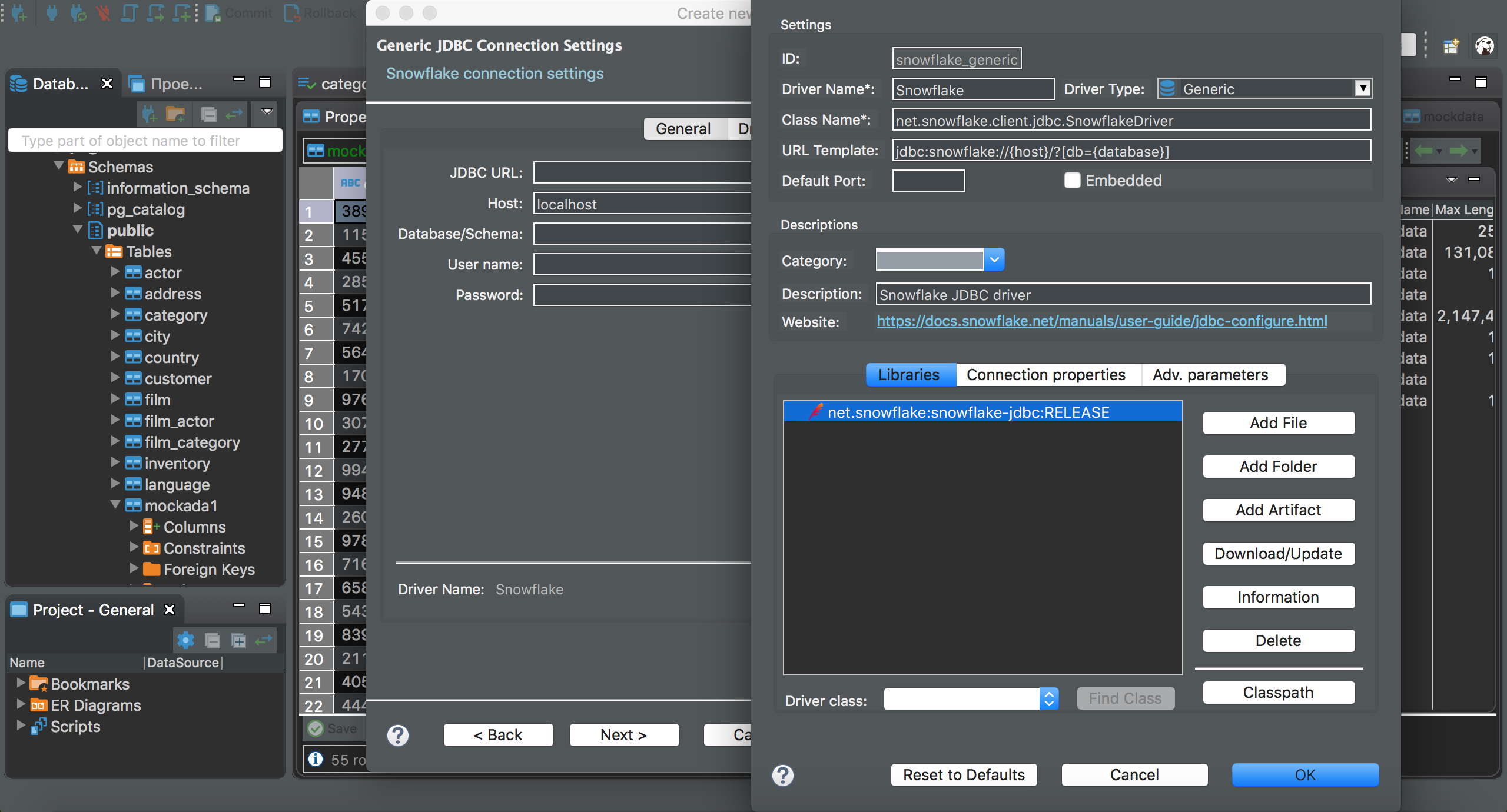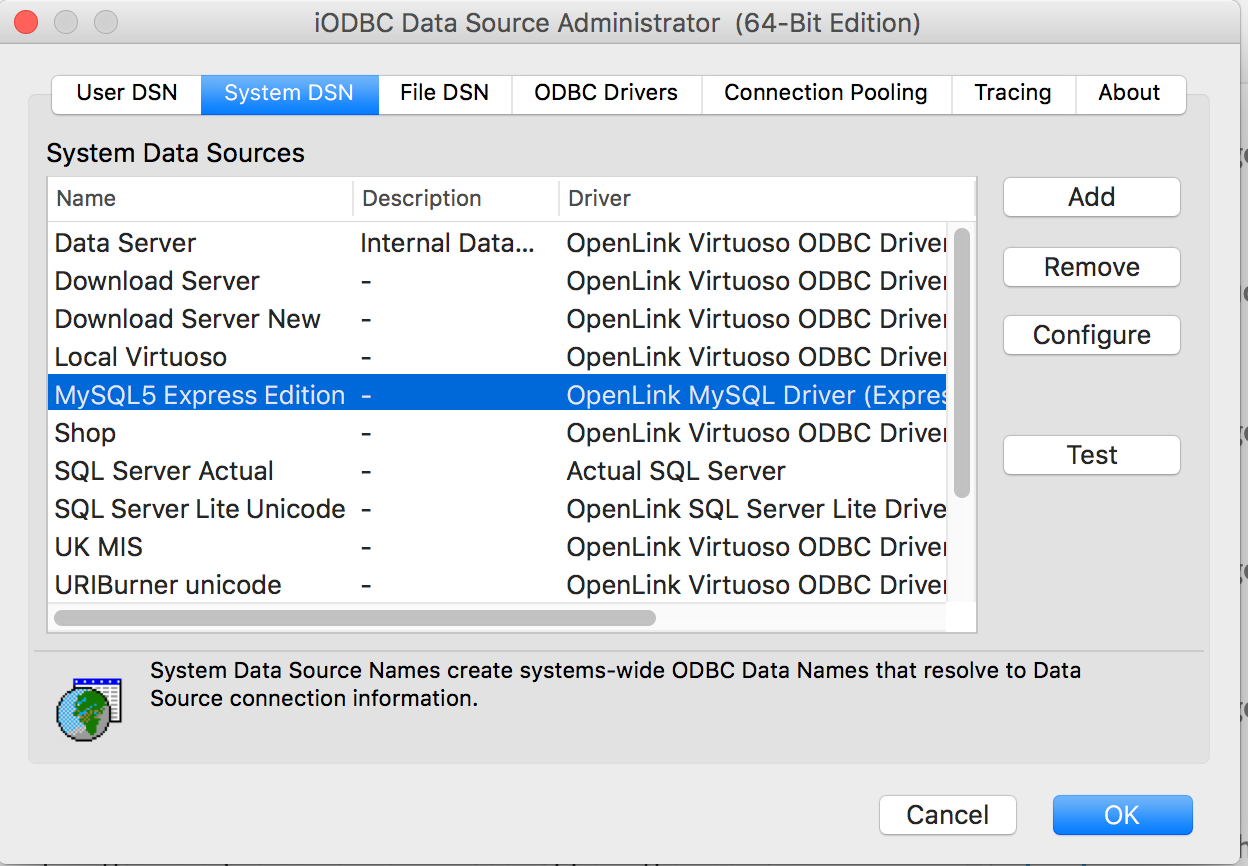- Free Odbc Driver For Mac Numbers 7
- Free Odbc Driver For Mac Numbers Download
- Free Odbc Driver For Mac Numbers Free
What is ODBC?
MySQL ODBC 5.2 Unicode Driver version 5.2.7, (32-bit and 64-bit) For MySQL Community Server 5.6.12 on Mac OS X use: Actual Technologies, Open Source Databases version 4.0.0. On Mac OSX, the ODBC driver 64-bit. In this post, we’ll walk through installation and setup of an ODBC connection on Windows 10 running the 32bit version of Excel. First, download the MongoDB ODBC driver here. Make sure to download the driver that matches your version of Excel. In our case, we’ll select the 32bit version of the ODBC driver.
- ODBC access from Apache OpenOffice, LibreOffice and OpenOffice.org to databases such as Microsoft SQL Server, Oracle, Salesforce.com, MongoDB, DB2, InterBase and Sybase ASE by using OOo applications with an Easysoft ODBC driver.
- If you installed a previous version of the Vertica ODBC driver for Mac OS X, your system may already have a registered driver named 'Vertica.' In this case, If you must remove or rename the older version of the driver before installing the Vertica ODBC driver.pkg.
Open Database Connectivity (ODBC) is an open standard Application Programming Interface (API) for accessing a database. In 1992, Microsoft partners with Simba to build the world’s first ODBC driver; SIMBA.DLL, and standards-based data access was born. By using ODBC statements in a program, you can access files in a number of different common databases. In addition to the ODBC software, a separate module or driver is needed for each database to be accessed.
ODBC Specification
The latest version of ODBC specification is available from Microsoft‘s website.
For your convenience, you can also download a PDF version of the current ODBC 3.8 Specification.
ODBC History
Microsoft introduced the ODBC standard in 1992. ODBC was a standard designed to unify access to SQL databases. Following the success of ODBC, Microsoft introduced OLE DB which was to be a broader data access standard. OLE DB was a data access standard that went beyond just SQL databases and extended to any data source that could deliver data in tabular format. Microsoft’s plan was that OLE DB would supplant ODBC as the most common data access standard. More recently, Microsoft introduced the ADO data access standard. ADO was supposed to go further than OLE DB, in that ADO was more object oriented. However, even with Microsoft’s very significant attempts to replace the ODBC standard with what were felt to be “better” alternatives, ODBC has continued to be the de facto data access standard for SQL data sources. In fact, today the ODBC standard is more common than OLE DB and ADO because ODBC is widely supported (including support from Oracle and IBM) and is a cross platform data access standard. Today, the most common data access standards for SQL data sources continue to be ODBC and JDBC, and it is very likely that standards like OLE DB and ADO will fade away over time.
ODBC Overview
ODBC has become the de-facto standard for standards-based data access in both relational and non-relational database management systems (DBMS). Simba worked closely with Microsoft to co-develop the ODBC standard back in the early 90’s. The ODBC standard enables maximum interoperability thereby enabling application developers to write a single application to access data sources from different vendors. ODBC is based on the Call-Level Interface (CLI) specifications from Open Group and ISO/IEC for database APIs and uses Structured Query Language (SQL) as its database access language.
ODBC Architecture

The architecture of ODBC-based data connectivity is as follows:
ODBC Enabled Application
This is any ODBC compliant application, such as Microsoft Excel, Tableau, Crystal Reports, Microsoft Power BI, or similar application (Spreadsheet, Word processor, Data Access & Retrievable Tool, etc.). The ODBC enabled application performs processing by passing SQL Statements to and receiving results from the ODBC Driver Manager.
ODBC Driver Manager
The ODBC Driver Manager loads and unloads ODBC drivers on behalf of an application. The Windows platform comes with a default Driver Manager, while non-windows platforms have the choice to use an open source ODBC Driver Manager like unixODBC and iODBC. The ODBC Driver Manager processes ODBC function calls, or passes them to an ODBC driver and resolves ODBC version conflicts.
ODBC Driver
The ODBC driver processes ODBC function calls, submits SQL requests to a specific data source and returns results to the application. The ODBC driver may also modify an application’s request so that the request conforms to syntax supported by the associated database. A framework to easily build an ODBC drivers is available from Simba Technologies, as are ODBC drivers for many data sources, such as Salesforce, MongoDB, Spark and more. The Simba SDK is available in C++, Java and C# and supports building drivers for Windows, OSX and many *Nix distributions.
Data Source
A data source is simply the source of the data. It can be a file, a particular database on a DBMS, or even a live data feed. The data might be located on the same computer as the program, or on another computer somewhere on a network.
-->The unixODBC Driver Manager on macOS and Linux supports tracing of ODBC API call entry and exit of the ODBC Driver for SQL Server.
To trace your application's ODBC behavior, edit the odbcinst.ini file's [ODBC] section to set the values Trace=Yes and TraceFileto the path of the file which is to contain the trace output; for example:
(You may also use /dev/stdout or any other device name to send trace output there instead of to a persistent file.) With the above settings, every time an application loads the unixODBC Driver Manager, it will record all the ODBC API calls which it performed into the output file.
After you finish tracing your application, remove Trace=Yes from the odbcinst.ini file to avoid the performance penalty of tracing, and ensure any unnecessary trace files are removed.
Tracing applies to all applications that use the driver in odbcinst.ini. To not trace all applications (for example, to avoid disclosing sensitive per-user information), you can trace an individual application instance by providing it the location of a private odbcinst.ini, using the ODBCSYSINI environment variable. For example:
In this case, you can add Trace=Yes to the [ODBC Driver 17 for SQL Server] section of /home/myappuser/odbcinst.ini.
Determining which odbc.ini File the Driver is Using

Free Odbc Driver For Mac Numbers 7
The Linux and macOS ODBC drivers do not know which odbc.ini is in use, or the path to the odbc.ini file. However, information about which odbc.ini file is in use is available from the unixODBC tools odbc_config and odbcinst, and from the unixODBC Driver Manager documentation.
For example, the following command prints (among other information) the location of system and user odbc.ini files which contain, respectively, system and user DSNs:
Free Odbc Driver For Mac Numbers Download
The unixODBC documentation explains the differences between user and system DSNs. In summary:
User DSNs --- these are DSNs which are only available to a specific user. Users can connect using, add, modify, and remove their own user DSNs. User DSNs are stored in a file in the user's home directory, or a subdirectory thereof.
System DSNs --- these DSNs are available for every user on the system to connect using them, but can only be added, modified, and removed by a system administrator. If a user has a user DSN with the same name as a system DSN, the user DSN will be used upon connections by that user.
Free Odbc Driver For Mac Numbers Free
See Also
